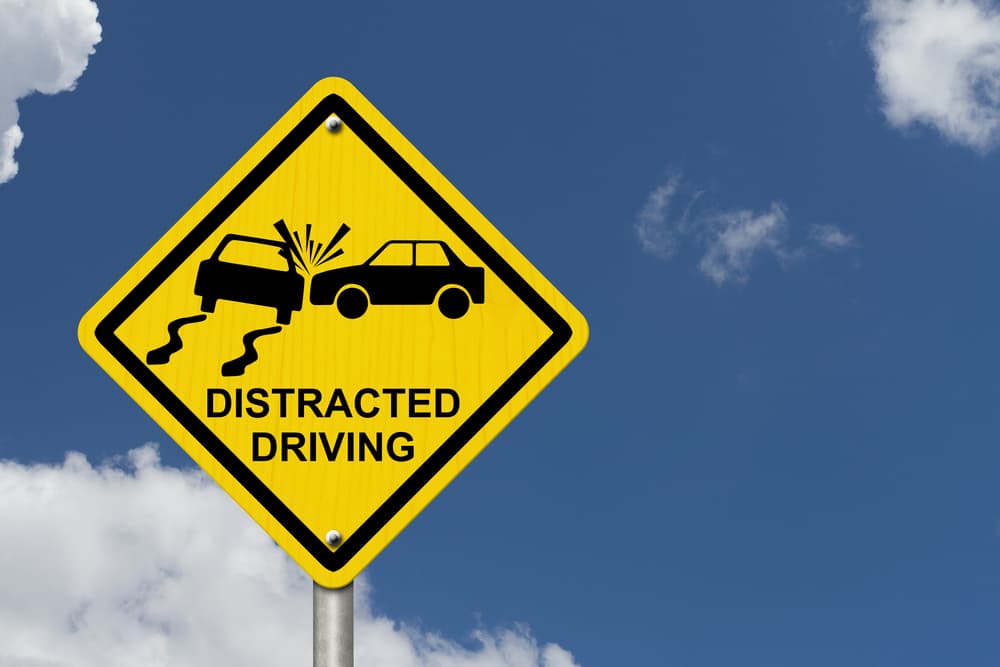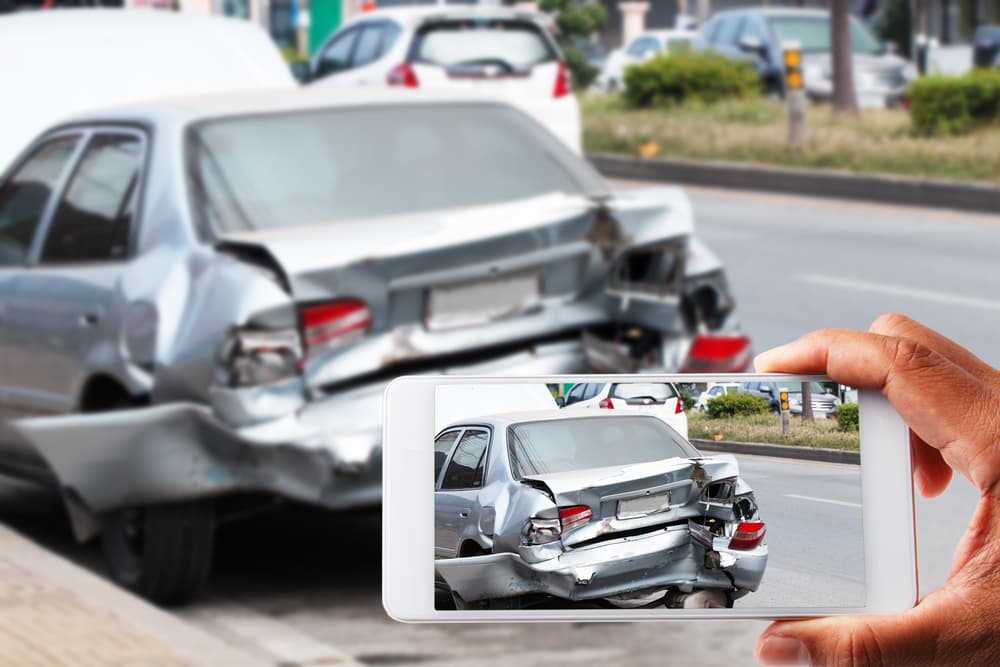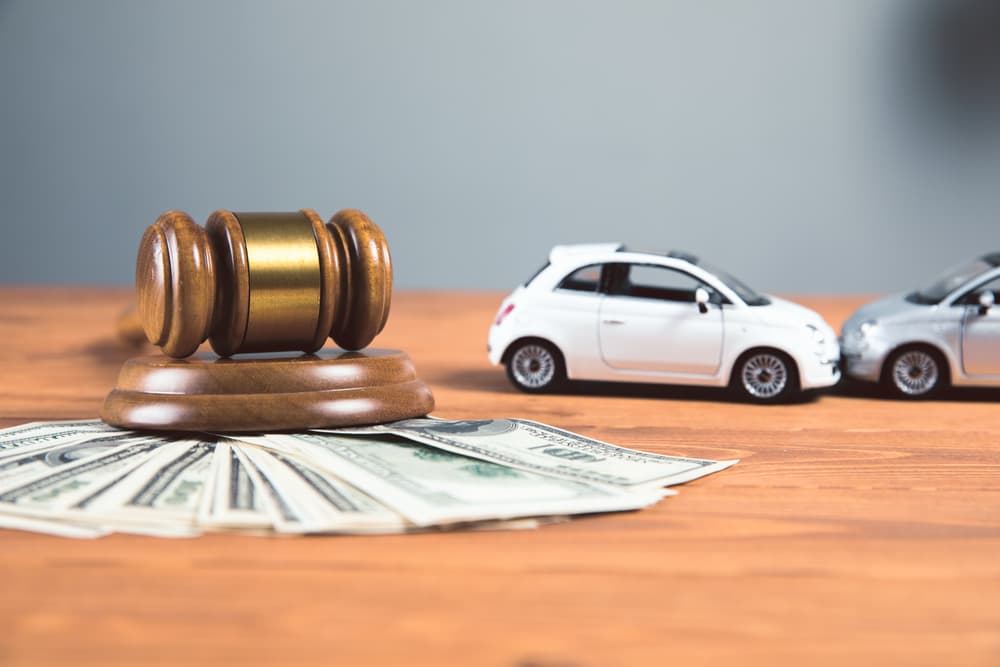Distracted driving can take many forms, including eating and drinking, texting, or even listening to loud music while behind the wheel. When a driver becomes distracted, they’re unable to focus their full attention on the road. Consequently, they may cause a severe accident that leads to debilitating injuries.
If you suffered injuries in a recent distracted driving accident, it’s important that you consult with a knowledgeable Edmonton car accident lawyer right away. Your lawyer can go over your options with you and work to maximize the compensation you recover for your accident-related losses.
Common Examples of Distracted Driving
Distracted driving is a significant cause of roadway accidents, with numerous examples of activities that divert a driver’s attention from the task of driving. These distractions can be categorized into three main types: visual, manual, and cognitive.
One of the most common examples of distracted driving is the use of mobile phones. Texting, in particular, is highly dangerous as it involves all three types of distractions: drivers take their eyes off the road (visual), their hands off the wheel (manual), and their minds off driving (cognitive). Making phone calls, even with hands-free devices, also divides a driver’s attention and can lead to accidents. Sending or reading a text takes a driver’s eyes off the road for about 5 seconds, which, at 55 mph, is like driving the length of a football field with closed eyes.
Another common distraction is eating or drinking while driving. This manual and visual distraction can lead to spills, which further divert attention and control from driving. Adjusting in-car controls, such as the radio or climate control, can also cause drivers to lose focus momentarily. Passengers, especially children or pets, can be distracting as well, often drawing a driver’s attention away from the road.
Cognitive distractions include daydreaming or being lost in thought. A driver who is mentally preoccupied is less likely to react promptly to sudden changes in traffic conditions. Cognitive distractions can be just as dangerous as visual or manual ones because they reduce the driver’s situational awareness and reaction time.
The types of accidents resulting from distracted driving vary widely but often include rear-end collisions, side-swipe accidents, and accidents at intersections:
- Rear-end collisions frequently occur because a distracted driver fails to notice traffic slowing down or stopping ahead.
- Side-swipe accidents can happen when a driver drifts out of their travel lane while distracted.
- Accidents at intersections are common because distracted drivers may run red lights or stop signs, failing to notice other vehicles or pedestrians.
If you suffered injuries in one of these types of distracted driving accidents, an experienced car accident lawyer can promptly investigate the circumstances and develop a plan of action for your personal injury case.
Frequent Injuries in Distracted Driving Accidents

Distracted driving accidents can lead to a variety of serious injuries. One of the most frequent injuries in distracted driving accidents is whiplash. This injury occurs when a sudden impact causes the victim’s head to jerk forward and then snap back quickly, straining various muscles and ligaments in the neck. Whiplash can result in pain, stiffness, and reduced range of motion in the neck, and it may require long-term physical therapy for recovery.
Concussions and other traumatic brain injuries (TBIs) are also common. A concussion can happen when the victim’s head strikes an object in the vehicle or is violently shaken, causing the brain to hit the inside of the skull. Symptoms typically include migraines, dizziness, confusion, and memory problems. Severe TBIs can lead to long-term cognitive impairments, emotional changes, and even physical disabilities.
Broken bones are another frequent result of distracted driving accidents. The force of a collision can easily fracture bones, especially in the arms, legs, ribs, and face. These injuries often require immobilization with casts or braces, and severe fractures may need surgical intervention to heal properly.
Spinal injuries are particularly serious and can have long-lasting consequences. The spine can become damaged in multiple ways during an accident, including herniated discs, fractures, or even spinal cord injuries. Damage to the spinal cord can lead to partial or complete paralysis, significantly affecting the victim’s quality of life.
Internal injuries, such as damage to organs or internal bleeding, can occur without immediate visible signs. The force of an impact can cause organs like the liver, spleen, or kidneys to become injured, leading to internal bleeding. These injuries are often life-threatening and require prompt medical attention.
Soft tissue injuries, such as sprains, strains, and bruises, are also common in distracted driving accidents. These injuries can affect various muscles, tendons, and ligaments and may result in swelling, pain, and limited mobility.
If you suffered any of these injuries in a distracted driving collision, you should focus your attention on getting the medical treatment you need while your lawyer handles the legal steps of your case.
Proving a Distracted Driving Accident Case with Evidence

Proving the elements of a distracted driving accident case with evidence is essential to establish liability and secure compensation for damages. To build a strong case, the injured accident victim (or plaintiff) must demonstrate that the at-fault driver was distracted, that this distraction caused the accident, and that the accident resulted in various injuries or losses. Here’s how each element can be proven with evidence.
- First, proving that the driver was distracted is crucial. Eyewitness testimony is often valuable, as passengers, other drivers, or pedestrians may have observed the driver using a phone, eating, or engaging in other distracting activities. Additionally, traffic cameras or dashcam footage can provide visual proof of the at-fault driver’s behaviour. Another vital piece of evidence is the driver’s phone records, which can show whether the driver made/received a call or text around the time of the accident. Social media activity can also be relevant. For instance, a post or message timestamped near the accident time can indicate driver distraction.
- Next, it’s essential to establish that the distraction directly caused the accident. Accident reconstruction experts can be instrumental in this aspect. These professionals analyze the accident scene, vehicle damage, and other factors to determine how the crash occurred. Their findings could show that the driver’s inattention led to the collision. Additionally, skid marks – or the lack thereof – can indicate whether the driver attempted to brake or swerve to avoid the crash, further supporting a claim of driver distraction.
- The final element is proving that the accident resulted in injuries or other losses. Medical records and reports from healthcare providers are critical in documenting the injuries sustained in the crash. These records should detail the extent and severity of the injuries, as well as the treatment required. Photographs of the injuries can also provide compelling evidence. Furthermore, testimony from medical experts can help to explain the long-term effects stemming from the injuries.
- Employment documents and income statements are essential for proving economic losses, such as lost earnings or loss of earning capacity. These documents can illustrate the financial effects of the accident on the victim’s life.
An experienced car accident lawyer can gather the documents necessary to satisfy your required legal burden of proof.
Settling or Litigating a Distracted Driving Accident Case

Deciding whether to settle or litigate a distracted driving accident case involves careful consideration of several factors. Both options have their advantages and disadvantages, and the decision should be based on the specifics of the case, the evidence available, and the accident victim’s goals.
Settling a car accident case means reaching an agreement with the other party (or, more likely, their insurance company) outside of court. One major advantage of settling is that it can save time and money. Court cases can be lengthy and expensive, involving lawyer fees, court costs, and other expenses. By settling, both parties can avoid these costs and resolve the matter more quickly. Settlements also offer certainty; the parties agree on the terms and know the outcome, which can be less stressful than the uncertainty of a trial verdict.
However, settling a car accident case may not always be the best option. The settlement amount that the at-fault party’s insurance company offers may be insufficient to cover all of the damages and losses suffered. If the settlement offer is too low, going to trial may result in higher compensation – especially if the evidence strongly supports the plaintiff’s claims.
Litigating a car accident case usually means taking it to court and having a judge or jury decide the outcome at trial. One significant advantage of trial litigation is the potential for a higher award. If the case is strong and the evidence is compelling, a court may award more in damages than what the insurance company offered in a settlement. Litigation also provides a sense of justice and accountability, as the responsible party is publicly held to account for their actions.
However, trial litigation still comes with certain risks and downsides. Trials can be lengthy and stressful, requiring extensive preparation and court appearances. The outcome is uncertain, and even with strong evidence, there is no guarantee of winning the case or receiving the desired compensation amount.
Instead of taking a car accident case to trial, the accident victim can pursue one or more types of alternative dispute resolution (ADR). The main types of ADR are mediation and arbitration.
- Mediation involves a neutral third party, called a mediator, who helps both parties communicate and try to reach a mutually acceptable agreement. The mediator does not make decisions but facilitates the settlement discussions. At mediation, the parties are not bound by any decision from the mediator. Therefore, they may decide to settle the case at the mediation hearing, continue settlement discussions at a later date, or take the case to trial.
- Arbitration, on the other hand, is more formal. An arbitrator – who is like a private judge – hears both sides of the case and then makes a binding decision. This process is quicker and less expensive than going to court, but the decision is final and typically cannot be appealed.
An experienced car accident lawyer can determine all of your available legal options and help you make the best decision for your individual case and circumstances.
Recovering Compensation after a Distracted Driving Accident
Recovering financial compensation after a distracted driving accident is essential for victims to cover their losses and move forward with their lives. There are several types of compensation that an accident victim can seek, addressing both economic and non-economic damages.
- Economic damages are the financial losses directly related to the accident. One major type of economic compensation is lost income. If the victim is unable to work due to their injuries, they can recover the income they would have earned during their recovery period. Additionally, if their injuries result in a long-term or permanent inability to work, the victim can seek compensation for loss of earning capacity. This covers the future income they would have earned if the accident had never occurred.
- Non-economic damages address the more intangible effects of the accident. Pain and suffering compensation covers the physical pain and emotional distress that the victim experienced because of their injuries. This type of compensation aims to acknowledge the effects of the injuries on the victim’s quality of life.
- Emotional anguish is another form of non-economic damage. It refers to the psychological effect of the accident, such as anxiety, depression, or post-traumatic stress disorder (PTSD). Victims can seek compensation for the emotional toll the accident has taken on their mental health.
- Loss of life enjoyment is compensation for the ways in which the victim’s injuries have affected their ability to enjoy daily activities and hobbies. If their injuries prevent them from participating in activities they once enjoyed, they can seek damages for this loss.
- Loss of consortium is compensation for the effect of the injuries on the victim’s relationships – particularly with their family or spouse. This can include loss of support, companionship, and affection due to the victim’s injuries.
An experienced car accident lawyer can determine the likely settlement or verdict value of your case and work to maximize the final compensation award you receive.
Speak with an Experienced Car Accident Lawyer Near You Today
If you suffered injuries in a car crash that resulted from someone else’s distracted driving, you are not alone. An experienced personal injury attorney can file a claim on your behalf with the insurance company, handle all settlement negotiations, and, if necessary, litigate your case to a resolution in court.
